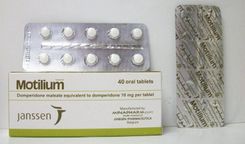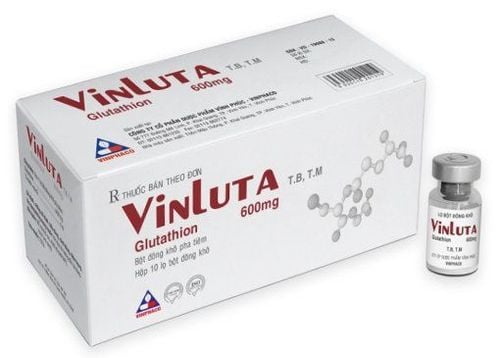This is an automatically translated article.
Xofigo is a radiotherapy for symptomatic bone metastatic castration-resistant prostate cancer that has not responded to at least 2 other therapies. So what exactly does Xofigo do?
1. What does Xofigo do?
Xofigo is a radiotherapy product, each mL of solution contains 1100 kBq Radium Ra 223 Dichloride, corresponding to 0.58ng Radium-223. Each vial of Xofigo contains 6mL of solution.
Radium-223 has a similar effect to calcium, selectively targeting bone, especially areas of bone metastasis through a complexing mechanism with Hydroxyapatite. The linear energy transfer leads to a high frequency of double-stranded DNA fragments in adjacent tumor cells, resulting in a potent cytotoxic effect. The alpha particle range from Radium-223 is less than 100 μm (less than 10 cells in diameter) which minimizes damage to surrounding normal tissues.
2. Instructions for using Xofigo
2.1 Indication for treatment Xofigo monotherapy or in combination with a luteinizing hormone-releasing hormone (LHRH) analogue is indicated for the treatment of patients with symptomatic castration-resistant, metastatic bone cancer. and no visceral metastases, still progressing after at least 2 prior systemic therapies (other than LHRH analogues), or the patient is ineligible for systemic therapy now available.
2.2. How to use Xofigo Xofigo should only be used by medical personnel authorized to handle radioactive drugs in a hospital after the patient has been evaluated by a specialist.
The dose regimen of Xofigo is 55 kBq/kg body weight, injected 4 weeks apart for a total of 6 injections. The safety and effectiveness of Xofigo injections more than 6 times have not been studied.
Doses of Xofigo in some special populations:
Elderly: There is no difference in safety or effectiveness in patients over 65 years of age and patients under 65 years of age. Therefore, no dose adjustment of Xofigo is required in elderly patients; Hepatic impairment: The safety and efficacy of Xofigo have not been studied in patients with hepatic impairment. However, because Radium-223 is not metabolised by the liver and is not excreted in the bile, hepatic impairment does not affect the pharmacokinetics of Xofigo. Therefore, no dose adjustment is required in this subject; Renal Impairment: In a phase III clinical study, there was no difference in safety or efficacy between patients with mild renal impairment (creatinine clearance 50 to 80 mL/min) and normal renal function. Limited data are available for patients with moderate renal impairment (ClCr 30 to 50 mL/min) and absolutely no data for patients with severe renal impairment (ClCr less than 30 mL/min) or end-stage renal disease. . However, because urinary excretion of Xofigo is minimal and elimination is predominantly faecal, renal impairment does not affect the pharmacokinetics of Radium-223; Children: Not suitable to use Xofigo. Xofigo is given by slow intravenous injection (usually about 1 minute).
2.3. Contraindications of Xofigo Xofigo is contraindicated in combination with Abiraterone acetate and Prednisone/Prednisolone.
3. Be careful when using Xofigo
Combination of Xofigo with Abiraterone, Prednisone/Prednisolone, or systemic therapy other than LHRH analogues: An analysis from a clinical trial in chemotherapy-nave patients with refractory prostate cancer asymptomatic or mild testicular disease and progressive disease with bone metastases showed an increased fracture risk and increased mortality in patients receiving Xofigo in combination with Abiraterone acetate and Prednisone/Prednisolone compared with patients receiving Xofigo in combination with Abiraterone acetate and Prednisone/Prednisolone. patient received placebo in combination with Abiraterone acetate and prednisone/prednisolone. The safety and effectiveness of Xofigo in combination with cancer therapies other than LHRH analogues have not been established, which may increase the risk of death and fracture. Therefore, the combination of Xofigo with systemic cancer therapies other than LHRH analogues is not recommended. The therapeutic benefit of Xofigo in patients with asymptomatic bone metastatic castration-resistant prostate cancer has not been established. Therefore, the use of Xofigo is not recommended in this case. In patients with orchiectomy-resistant prostate cancer with bone metastases and mild symptoms, the benefit of treatment with Xofigo should be carefully evaluated. Bone marrow suppression, especially thrombocytopenia, neutropenia, and leukopenia, has been reported in patients treated with Xofigo. Therefore, patients should be tested for hematology before starting and before each dose of Xofigo. The efficacy and safety of cytotoxic chemotherapy administered after treatment with Xofigo have not been established. Crohn's disease and ulcerative colitis: The safety and effectiveness of Xofigo in patients with Crohn's disease and ulcerative colitis have not been studied. Because Xofigo is excreted in the feces, there is a risk of exacerbation of acute enterocolitis, so Xofigo should be used only after careful benefit-risk assessment in these patients. Patients with untreated spinal cord compression should receive the correct treatment regimen before starting or continuing treatment with Xofigo. Xofigo increases the risk of fracture, especially in patients with a history of osteoporosis and fewer than 6 bone metastases. Before initiating treatment with Xofigo, patients should be assessed for fracture risk by measures such as scintigraphy or bone mineral density measurement. At the same time, patients should be monitored for fracture risk closely for at least 24 months, possibly using preventive measures such as bisphosphonates or denosumab. In patients treated concomitantly with Bisphosphonates and Xofigo the risk of developing osteonecrosis of the jaw cannot be excluded. Secondary malignancies: Xofigo contributes to the patient's long-term cumulative radiation exposure. This therefore increases the risk of cancer and genetic defects. Xofigo increases the incidence of diarrhea, nausea, and vomiting, which can lead to dehydration. The patient's fluid needs and dehydration should be carefully monitored. Animal reproduction studies have not been performed with Xofigo. Because of the potential effects on spermatogenesis associated with radiation therapy, men should use effective methods of contraception during treatment and for at least 6 months after stopping Xofigo. Xofigo is not indicated for use in women, and therefore should not be used by women who are, or may be, pregnant or nursing. There are no human data on the effects of Xofigo on fertility. Based on animal studies, there is a potential risk that radiation from Xofigo could cause adverse effects on fertility.
4. Side effects of Xofigo
Xofigo increases the risk of fractures. In clinical studies, concomitant use of bisphosphonates or denosumab reduced fracture rates in patients receiving Xofigo monotherapy. It should be noted that the risk of fracture may persist for up to 24 months after the first dose of Radium-223; Injection site reactions, such as erythema, pain, and swelling, were reported in 1.2% of patients treated with Xofigo and in 0% of patients treated with placebo; Secondary malignancies: Xofigo contributes to a patient's overall long-term cumulative radiation exposure. Long-term cumulative radiation exposure can increase the risk of cancer and genetic defects, especially bone tumors, myelodysplastic syndromes and leukemia; No cases of cancer due to Xofigo were reported in clinical trials during follow-up up to 3 years.
Please dial HOTLINE for more information or register for an appointment HERE. Download MyVinmec app to make appointments faster and to manage your bookings easily.













